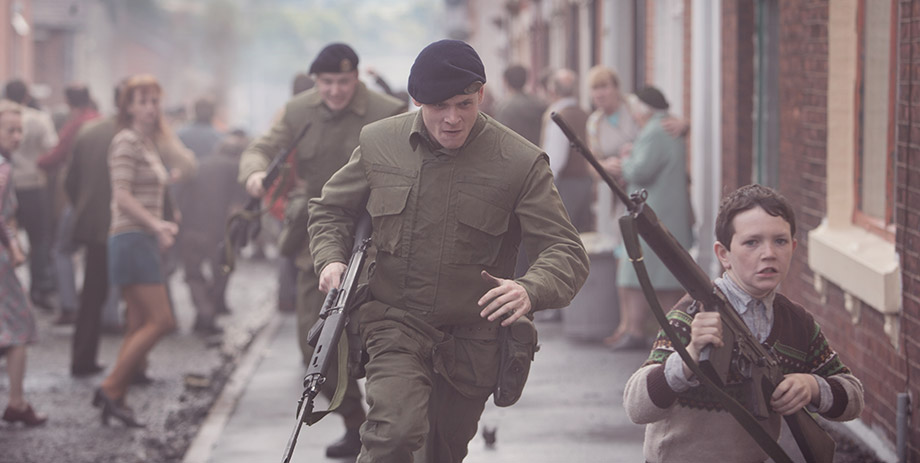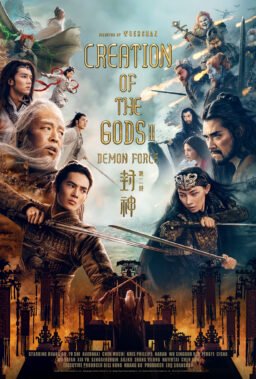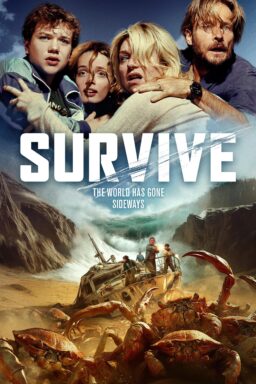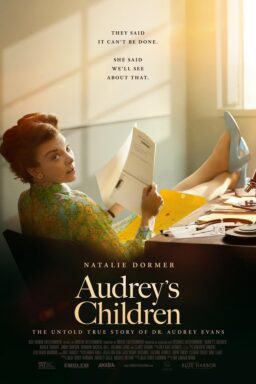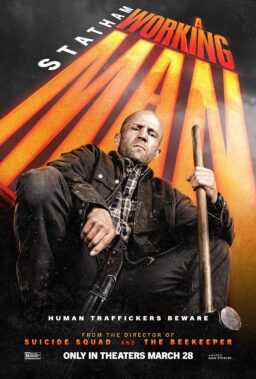While high-profile, Oscar-buzzed period pieces like “The
Theory of Everything,” “The Imitation Game,” and “Mr. Turner” have been some of
the more highly touted entries in this year’s TIFF program, they are far from
the only films designed to transport viewers to another era. Three
recent premieres tackle the effort to serve as cinematic time machines in completely
different ways, illustrating the diversity of programming at TIFF this year.
Only one of them truly works, but the other two had fans here in Toronto, even
if I wasn’t one of them.
My favorite by far is Yann Demange’s excellent “’71,” a film that captures The
Troubles in a way that reminds one of Paul Greengrass, and a movie that further
makes the case of “Jack O’Connell, Rising Star.” The breakthrough lead of “Starred
Up” stars as Gary, a British Army recruit in 1971, who finds himself not going
to combat overseas but heading to Belfast to help manage the conflict there.
Religion and politics have divided the city in such a way that violence is a
daily fact of life. Throw a bunch of young men in uniforms into the powder keg
and watch it explode.
Although that’s not to imply that “’71” is a political piece
or a work that tries to capture the entire struggle. It is a very specific
story about a young man caught in a nightmare. Gary heads out to patrol a
Catholic area on a gloomy Irish day, and violence ensues, stranding the young
man in what is essentially enemy territory. He is “behind enemy lines” in his
own country—a domestic war zone. Think about that for a minute. A Protestant
Loyalist boy offers to help him get home, and a gripping thriller unfolds
against a backdrop of corruption, betrayals and bombings.
O’Connell is good here, but it’s not as much of a character
piece as “Starred Up” (although it’s a skill to not steal focus from the story
and the young actor definitely grounds the entire film). It’s more of a
director’s film and Demange and his team deliver the goods in terms of form.
There are chase scenes and moments of violence in which it feels like Demange’s
cameraman was literally just running alongside O’Connell, creating that You Are
There sense of unease that Greengrass employed so expertly in the “Bourne”
films. There’s a chase immediately after the riot that is straight out of a
Bourne flick. And there’s a beautiful use of perspective in a sequence after a
startling bombing, as the camera wobbles and rises to its feet, as if we have
been impacted by the blast. This is confident, fascinating filmmaking.

Lisandro Alonso’s “Jauja”
is a confident, fascinating film as well, but it’s a journey that couldn’t be
more distinct from Demange’s. Whereas that film works as a thriller, Alonso’s
is a meditation, a defiantly slow, meticulous, refined piece of work that will
challenge viewers who aren’t willing to cope with its pace for the cumulative
impact of its vision. “Jauja” took a LONG time to click for me, coming off as
too lethargically paced for most of its running time, and too in love with its
own vision to craft anything for the audience to care about. Despite that criticism
lingering for the majority of the film’s running time, perhaps Alonso’s vision
wore me down, because I was engaged by the end, and it’s a film that I have
reconsidered in the few days since I saw it, lingering more strongly in memory
than many other TIFF flicks.
The great Viggo Mortensen stars as a 19th-century
Danish general named Gunnar Dinesen, who is on a scouting mission in Patagonia
during the Spaniards’ 1882 campaign to eliminate the indigenous people of the
area. He is a stranger in a very strange land, made more nervous by the
inclusion of his daughter Ingeborg (Villbjork Agger Malling) on the journey.
When the 15-year-old runs off with a young Spanish soldier, Dinesen follows her
into the wilderness, scared that she will cross paths with the notorious madman
Zuluaga. What unfolds is a descent into madness, violence, history and
something else entirely.
“Jauja” is a visually striking film, shot in full-frame with
slightly rounded edges that give it the feeling of old photographs come to
life. It is a work that often feels like a dream, as the imagery centers on
elements of the natural world (there’s a sound of rolling waves in the
background for, I believe, more than half the film), but it’s a piece trying to
speak in a different cinematic language than anything else I saw at TIFF this
year. While I was in it, I didn’t appreciate it as much as I did after, when “Jauja”
refused to blend into the mix of festival film memory.

Much easier to forget is Daniel Barber’s “The Keeping Room,” a gender twist on
the Civil War action movie starring the always-interesting Brit Marling, Hailee
Steinfeld and Muna Otaru. Marling and Steinfeld play sisters on a farm in the
last days of the Civil War, alone and entirely unaware if their father and
brother are alive and coming home. That aspect of “The Keeping Room” is an
interesting one—the idea that there were thousands of people who had no idea if
they were alone when the war ended, as their loved ones couldn’t exactly call
and tell them they were on their way. And so these two sisters and their slave
maintain the farm on their own, waiting for something to happen. Men come, but
they are not their family.
Two Yankee scouts (Sam Worthington and Kyle Soller) are
pillaging their way through town in advance of the Union Army. When they cross
paths with the sisters, “The Keeping Room” suddenly shifts from a poetic period
piece to a home invasion thriller—neither film works. The first act is too
languid, self-aware and thin for us to care about its characters, and the
second act is a depressingly ultra-violent and grim action movie. In theory,
this is a movie about the end of an era—the war, slavery, and traditional
gender roles. Using that as a backdrop for an action-drama should have produced
a more energetic, vital, believable film than “The Keeping Room.”

